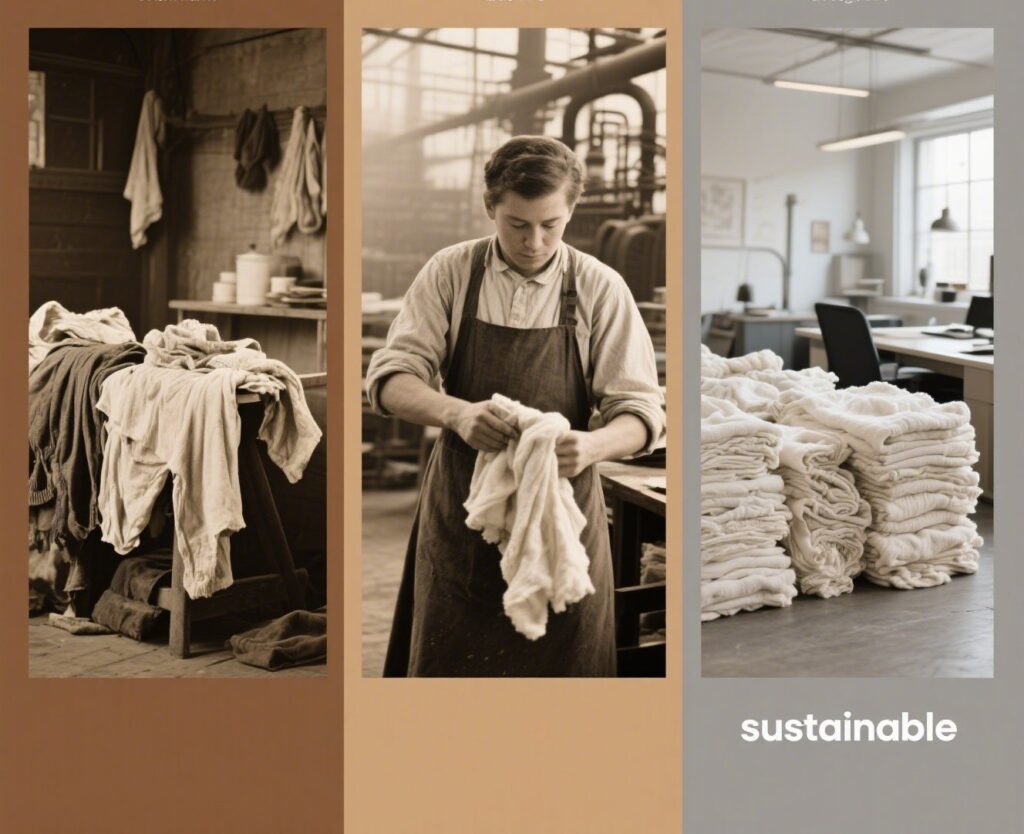Explore the rich history of cotton rags in cleaning from traditional household uses to modern eco-friendly industrial solutions.
From Tradition to Industry: The Evolution of Cotton Rags in Cleaning
When it comes to cleaning, cotton rags have played a pivotal role for centuries. Their adaptability, absorbency, and durability have made them indispensable in various cleaning applications, from household chores to industrial maintenance. Understanding the history of cotton rags not only highlights their value but also underscores how they became a staple in cleaning industries worldwide.

Early Origins: A Humble Beginning
The history of cotton rags dates back to ancient civilizations. Initially, people used remnants of worn-out cotton garments to clean surfaces, as these materials were readily available. Due to their soft texture and absorbent nature, cotton rags became the preferred choice for wiping and dusting. In rural communities, old clothes were routinely repurposed as cleaning cloths, fostering a culture of resourcefulness and sustainability.
As time went on, cotton rags began to take on more specialized roles. In many households, families kept a separate pile of rags for different tasks, including dusting, mopping, and scrubbing. This practical approach helped conserve fabric and reduce waste.
The Industrial Revolution: A Turning Point
During the Industrial Revolution, the demand for cleaning supplies grew exponentially. Factories, workshops, and mills required efficient cleaning solutions to maintain hygiene and safety. Cotton rags, due to their affordability and effectiveness, emerged as the go-to choice for industrial cleaning.
At this stage, the use of cotton rags became more organized. Manufacturers started collecting textile scraps from garment factories and transforming them into standardized cleaning cloths. These repurposed rags were then distributed to various industries, including automotive, metalworking, and construction.
Moreover, cotton’s natural strength and absorbency made it ideal for wiping machinery, cleaning spills, and polishing equipment. As industries expanded, the production and distribution of cotton rags became a thriving business, promoting both sustainability and cost-efficiency.
20th Century: Standardization and Mass Production
As the 20th century progressed, the need for consistent quality led to the standardization of cotton rags. Manufacturers categorized rags based on factors like fabric type, size, and absorbency. This allowed businesses to choose rags tailored to specific tasks, such as heavy-duty cleaning or delicate surface polishing.
Furthermore, the textile recycling industry flourished during this period. Cotton rags were produced from post-consumer textiles as well as pre-consumer waste from textile factories. This practice not only minimized waste but also reduced the environmental impact of textile production.
Additionally, cleaning companies started branding their rags, offering assurance of quality and consistency. As cotton rags became more commercially available, they remained an integral part of the cleaning industry.
Modern Era: Sustainable and Versatile Solutions
Today, cotton rags are still widely used across various industries. However, their role has evolved to align with modern sustainability practices. With the growing emphasis on eco-friendly solutions, businesses are increasingly opting for recycled cotton rags. These products are manufactured from discarded cotton textiles, helping reduce landfill waste while providing high-quality cleaning options.
In addition to traditional uses, cotton rags have diversified into specialized cleaning tasks. Whether used for automotive detailing, industrial maintenance, or janitorial services, they continue to offer versatility and efficiency. Many companies now market their rags as sustainable alternatives to disposable wipes, appealing to environmentally conscious consumers.
Why Cotton Rags Remain Relevant
Despite advancements in synthetic cleaning materials, cotton rags maintain their relevance due to several key advantages:
- Biodegradability: Unlike synthetic wipes, cotton decomposes naturally, reducing environmental impact.
- Cost-Effectiveness: Reusable and long-lasting, they help cut down on cleaning expenses.
- High Absorbency: Ideal for absorbing oils, water, and cleaning solutions.
- Versatile Applications: Suitable for wiping, dusting, polishing, and scrubbing in various industries.
The continued preference for cotton rags in industrial settings is a testament to their enduring practicality and sustainable value.
Conclusion: A Tradition That Endures
Cotton rags have transitioned from humble household cleaning aids to essential industrial tools, all while maintaining their core benefits of durability and absorbency. Their evolution reflects the balance between traditional practices and modern needs, emphasizing resourcefulness and sustainability. As businesses continue to seek eco-friendly cleaning solutions, cotton rags are likely to remain a staple for years to come




